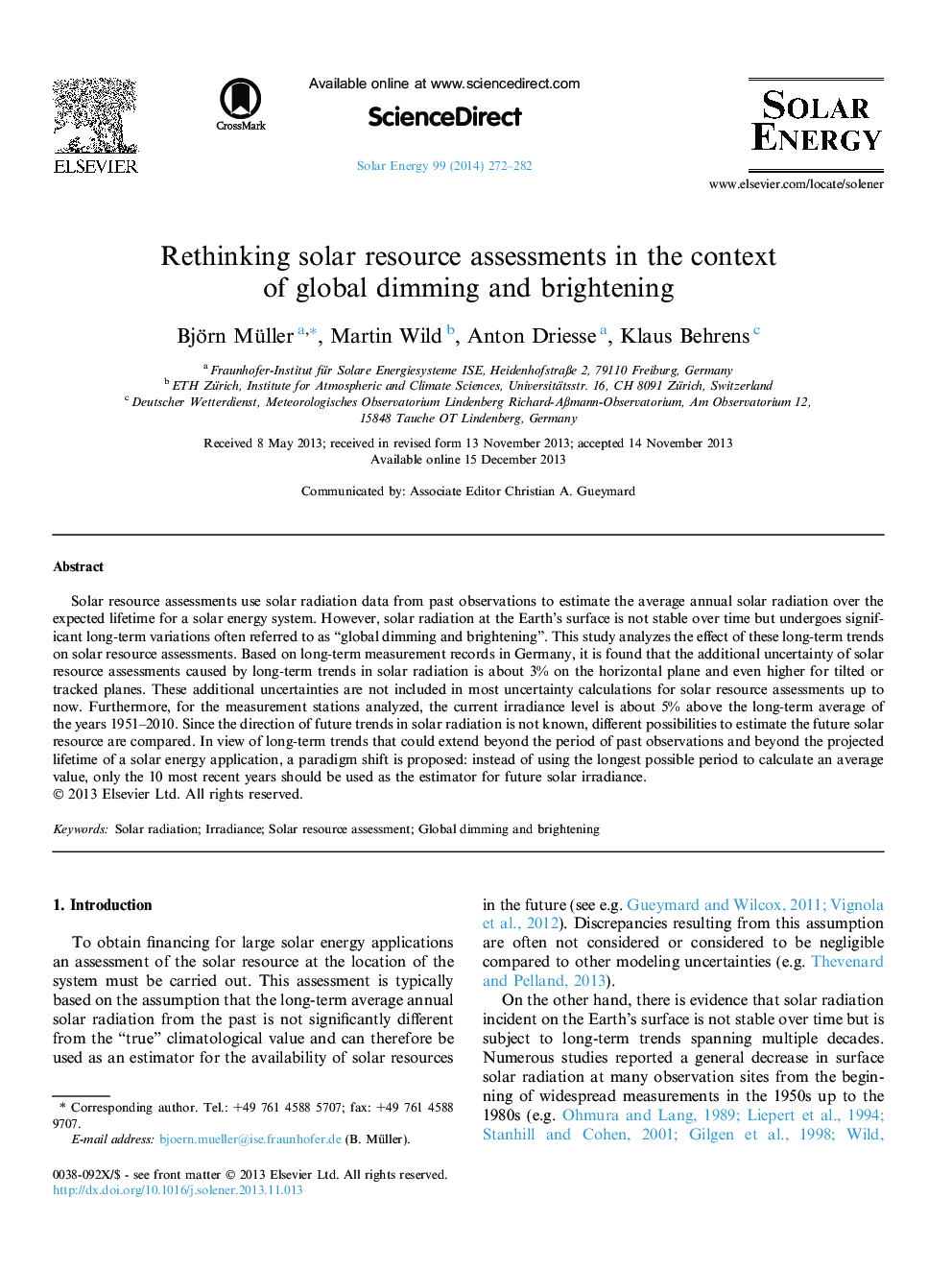| کد مقاله | کد نشریه | سال انتشار | مقاله انگلیسی | نسخه تمام متن |
|---|---|---|---|---|
| 1550234 | 1513119 | 2014 | 11 صفحه PDF | دانلود رایگان |
• We analyzed long-term solar radiation measurements (1951–2010) in Germany.
• We found that solar irradiance is influenced by dimming and brightening trends.
• The uncertainty of a solar resource assessment resulting from these trends is 3%.
• It is proposed to use the 10 most recent years to estimate future solar irradiance.
Solar resource assessments use solar radiation data from past observations to estimate the average annual solar radiation over the expected lifetime for a solar energy system. However, solar radiation at the Earth’s surface is not stable over time but undergoes significant long-term variations often referred to as “global dimming and brightening”. This study analyzes the effect of these long-term trends on solar resource assessments. Based on long-term measurement records in Germany, it is found that the additional uncertainty of solar resource assessments caused by long-term trends in solar radiation is about 3% on the horizontal plane and even higher for tilted or tracked planes. These additional uncertainties are not included in most uncertainty calculations for solar resource assessments up to now. Furthermore, for the measurement stations analyzed, the current irradiance level is about 5% above the long-term average of the years 1951–2010. Since the direction of future trends in solar radiation is not known, different possibilities to estimate the future solar resource are compared. In view of long-term trends that could extend beyond the period of past observations and beyond the projected lifetime of a solar energy application, a paradigm shift is proposed: instead of using the longest possible period to calculate an average value, only the 10 most recent years should be used as the estimator for future solar irradiance.
Figure optionsDownload as PowerPoint slide
Journal: Solar Energy - Volume 99, January 2014, Pages 272–282
